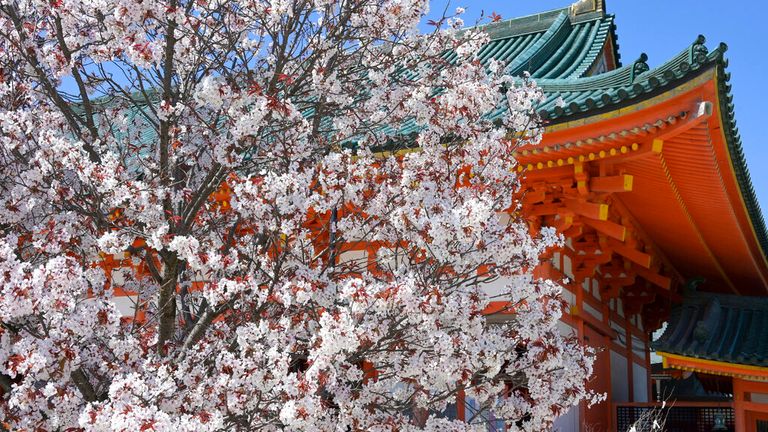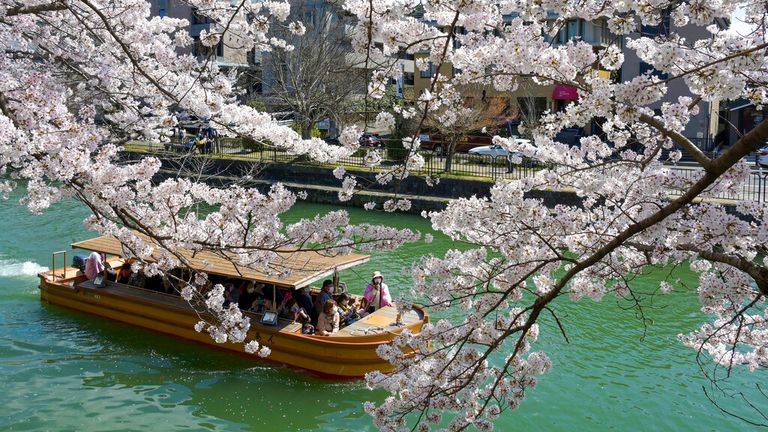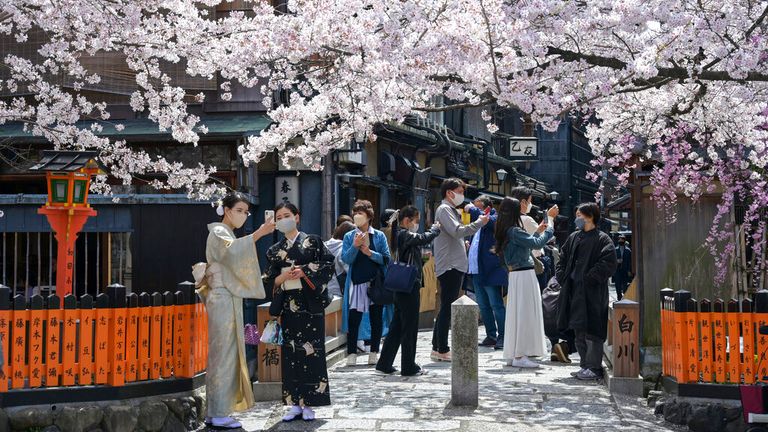Climate crisis: Kyoto cherry blossom season shifted by global warming and urban development
Both the climate crisis and the hotter temperatures of urban environments like Kyoto have brought forward cherry blossom dates, with consequences for festivals, tourism and ecosystems.
Friday 20 May 2022 10:13, UK
The famous cherry blossom season in Kyoto, whose pink hue heralds spring, is happening earlier due to climate change and urban development, a new study has found.
The delicate flowers now come into full bloom 11 days earlier than if no human-induced climate change or urban warming had happened, according to a study published in a peer-reviewed journal.
Last year was the earliest full flowering date in the 1,200 year Kyoto record, with the cherry blossom bursting into colour by 26 March 2021. This year's full flowering date was declared on 1 April 2022.
The researchers from the Met Office and Osaka Metropolitan University project the date of peak blossom will be a full 17 days earlier by 2100.
"Spring cherry blossom flowering is a culturally significant event in Japan," said contributing author Yasuyuki Aono from Osaka Metropolitan University.
The timing of the blossom's fleeting appearance is important to Japan, whose spring festivals contribute significantly to the local economy.
But the flower season also has a knock-on effect on crop-tree farming and land management practices.
To determine the climate change influence, the scientists compared a natural climate - simulated by computer models that remove the greenhouse gas emissions from human activity - with the current climate.
To assess the influence of urban warming, driven by development, they compared temperatures measured at a Kyoto city centre weather station with those from a rural location, Kameoka.
Temperatures in the two locations began to diverge after the 1940s, with central Kyoto warming faster than rural Kameoka.








